Proiecte
Core Program
The project aimed to bring added value through multidisciplinary, complex research regarding the knowledge of the patterns of interaction between natural and anthropogenic pressures, as well as their effects on the Black Sea ecosystem.
The project aims to carry out geological and geophysical studies on the flexure area and the upper part of the Continental slope of the North-West Black Sea. It studies the implications on the evolution of the marine basin, sediment transport phenomena, the stability of the continental slope, with a special look at the exploitation of marine resources in the deep-sea area.
The project will address several important questions related to the better management and adaptive governance of space and of exploitable or conservation-important biological resources, such as:
– What is the distribution of pelagic and benthic habitats according to the European Directives (such as MSFD, WFD) and the conservation and protection requirements?
– How can the requirements for conserving the integrity and functioning of habitats be integrated with those of sustainable economic development, in accordance with the principles of the bioeconomy and “Blue Growth”?
– What is the ecological status of habitats and their socio-economic potential?
– What is the future of biotechnology? Does the Black Sea have an unique or exploitable genetic potential?
– What is the impact of natural and anthropogenic pressures on the gene pool and phenotypes of benthic and pelagic organisms?
– What is the trend concerning the integrity, ecosystem functionality, and dynamics of these habitats?
The project aligns with the Water Framework Directive, the Habitats Directive, the Marine Strategy Framework Directive and the Maritime Spatial Planning Directive, contributing to improving knowledge regarding the distribution and role of benthic and pelagic habitats important for the development of specific sectors of the eco-sustainable maritime economy, as well as for spatial planning and the exploitation of biological or mineral resources.
The project involves geological, geochemical and sedimentological research of the coastal lakes in the south – Tashaul, Corbu, Siutghiol, Tabacariei, Agigea, Costinesti, Techirghiol, Tuzla, Tatlageac, Mangalia Swamp and Limanu Balta –, that are complex freshwater ecosystems in Romania that provide a wide spectrum of ecosystem services. Due to their high biological production and productivity, they are a huge reservoir of biodiversity, function as a natural biofilter and buffer zone, and are suppliers of natural goods.
The project aimed to substantiate specific studies in the representative sectors of the Romanian sector of the Danube – the areas exposed to flood risk, the areas exposed to increased erosion, areas with potential for implementing “green solutions (Nature Based Solutions)”, river – tributary river and, respectively, river – sea confluences, the area with islands, the area with a branched course, the area with meanders, rectifications included, the area with arms ephemerally fed by the river, etc.
The project aimed at the scientific and technical substantiation needed to include two sites with natural CO2 emissions from Banat and Harghita, with the status of natural laboratories, in the European network of research infrastructures in the field of carbon capture, transport and storage (ECCSEL – European Carbon Dioxide Capture and Storage Laboratory Infrastructure), as well as the substantiation of the accession of GeoEcoMar to the ECCSEL consortium. The sites in Romania could have been made available to researchers across Europe for testing the new monitoring methods or for in-depth investigations of CO2 migration mechanisms. These types of studies were important to prevent the potential risks associated with the geological storage of CO2 and to increase the safety associated with the technology.
The project represented a nationwide premiere and is integrated into the ECCSEL enlargement strategy towards the Eastern Europe. The accession of GeoEcoMar to the ECCSEL consortium represented an opportunity for Romanian research in the field of geological storage of CO2 and its recognition at European and international level.
The project aimed at documenting and creating a database of the geological and paleontological sites on the territory of Romania’s major geotectonic units by selecting the most representative sites for the assessment of the geo-diversity values through geological audit.
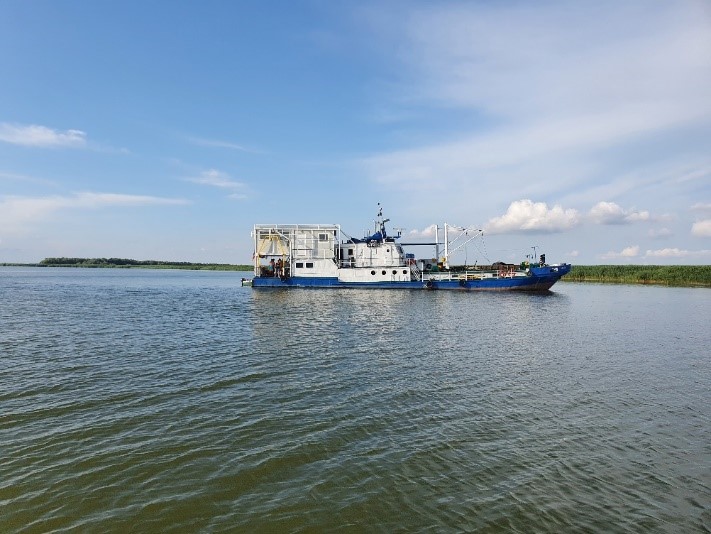
The project aimed to conduct an interdisciplinary assessment of the environmental quality of deltaic ecosystems, focusing on surface water, sediments, and biota. It also included the evaluation of aquatic vegetation expansion and identifying erosion and sediment accumulation processes in key areas within the delta region. The primary objective was to assess the impact and associated risks resulting from natural dynamics and anthropogenic pressures, thereby contributing to a deeper understanding and more effective management of vulnerable wetland systems.
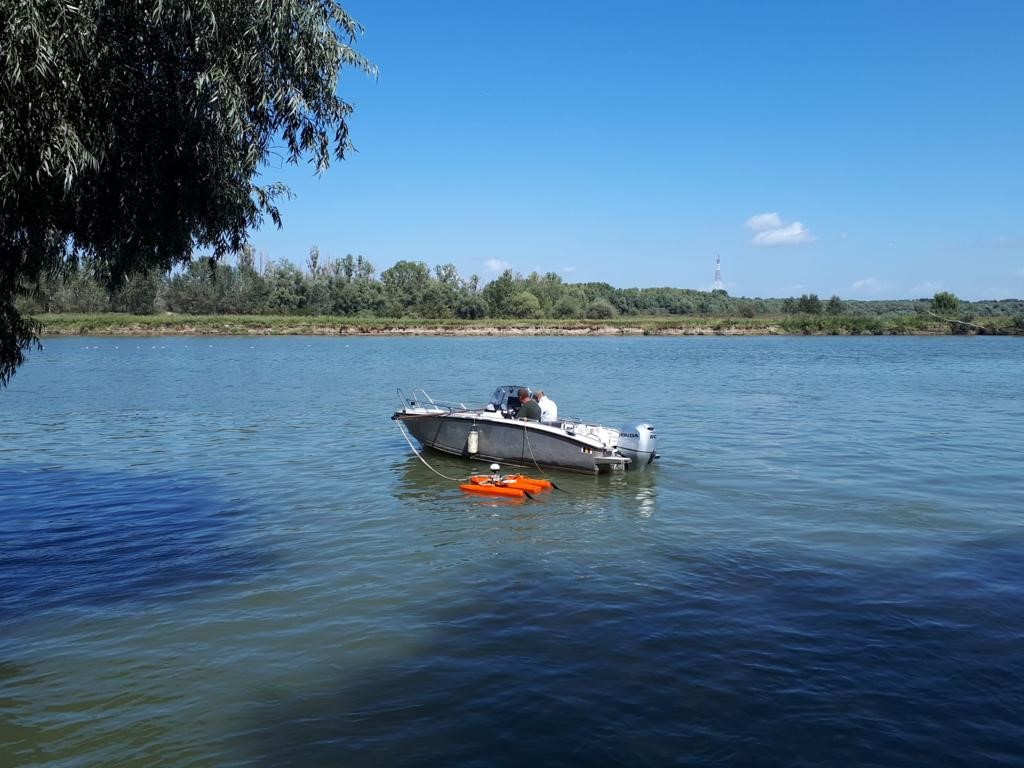
The project aimed at assessing the current state of the areas affected by the anthropogenic changes that occured in the Danube Delta and the coastal lakes, to conduct an integrated quality study of these ecosystems, that were under anthropogenic influences, as well as to formulate concrete proposals on the sustainable management of natural resources. It involved complex (qualitative and quantitative) studies and detailed multidisciplinary investigations on the Danube Delta branches, the inter-distributary areas and coastal lakes, and it was using modern research equipment and techniques such as multibeam bathymetry, currentometry using the Acoustic Doppler Current Profiler – ADCP (necessary for measuring the morphology of the Danube riverbed and currents), the resulting data having a very high degree of precision.
In the field of geology, geophysics and geoecology, INCD GeoEcoMar is a research institution of reference that is focused on the study of the aquatic environmental components (marine, deltaic and fluvial). The research activity includes the following main areas: geological and geophysical studies within the Danube macro-geosystem – Danube Delta – Black Sea, research in the field of natural resources, minerals, energy (conventional and unconventional) and biological, geochemistry, oceanography and marine ecology, complex studies in the Black Sea coast, geology-paleontology, protected natural areas, impact studies and environmental balance sheets, specialized services and consultancy. GeoEcoMar has adapted its own development strategy for the coming years in accordance with the requirements of the evolution of Romanian society, but also taking into account the context of the changes at European level. Thus, starting from the national development priorities of Romania, the development strategy of GeoEcoMar aims to: investigate the aquatic environments for deep geological and geophysical knowledge, highlight new marine resources (mineral, energy, biological), study the effects of global climate change and anthropogenic impact on the system and propose the necessary measures to protect the aquatic environments, in order to improve their quality, applications in the field of marine natural hazards and the correlation of marine environmental surveillance networks with the international ones, increasing competitiveness and developing the knowledge-based economy.
The project involved an interdisciplinary study of the evolution of recent paleogeographic changes produced in the coastal area and in the Danube Delta that was carryed out by investigating the structure and content of the Holocene sedimentary quverture, as well as by determining the geodynamic regime.
The project continued the geophysical research in the submersed areas adjacent to the archaeological sites located downstream of the Drobeta Fortress (Castravita, Turis, Sucidava, Zimnicea, etc.) and was based on the experience of previous studies conducted in the same area. The main objective was to make a very detailed geophysical investigation of submerged areas belonging to several archaeological sites on the Danube, upstream of Sulina (Sacidava, Altenum, Axiopolis, Dinogetia, Halmyris, Aegyssus, Enisala and Argamum), which, from the historically and archaeologically points of view, virtually covers all the epochs of the ancient period. Geophysical studies conducted in the submersed area have been useful for future on land archaeological excavations. In the case of sites along the Danube, the geophysical works (georadar, magnetometric and electrometric) have aimed to identifying the sources of anthropogenic pollution of the soil and the subsoil. In order to exclude as many of the anomalies generated by anthropogenic polluting factors (buried constructions of recent age, pipelines, oil polluted areas, etc.), it was necessary to carry out research using PotentQ software, 3D and 2D models corresponding to the anomalies generated by existing pollutant factors in the archaeological sites. The proposed methods for geophysical research in the submersed area were the magnetometric, seismoacoustic (side sonar scan) and electrometric method, respectively. Geophysical studies took place in the fluvial and lacustrine areas adjacent to each archaeological site. The first works were topographic, with the help of which the networks for the acquisition of field data were transposed into the field, the activity being also attended by archaeologists. Data acquisition works started from the topographic support network of each site. Geophysical mapping started with bathymetric measurements, followed by magnetometric measurements, and ended with electrometric work. Prior to this, magnetic susceptibility studies were carried out on rock, brick, mortar samples, etc., necessary to calibrate the magnetometric method. After conducting these studies, diving into areas of interest could be done to mark in-situ, film and photograph any vestiges discovered.
The project aimed at identifying the areas with high methane emissions in the atmosphere from the surface water mass, in relation to the amount released from sediments, dispersed in the water column and emitted to the atmosphere in different areas of the Black Sea. The project also aimed to identify risk factors arising from sudden and high-intensity emissions, having an important role in assessing the climate response to sudden emissions from shallow areas and gas-hydrate reservoirs.
The Masterplan “Protection and rehabilitation of the coastal zone”, developed in 2011, forsees the restoration of beaches along the southern Romanian Black Sea shore (from Cape Midia to Vama Veche) through artificial beach nourishment, to be completed by 2027. The Masterplan also envisioned developing tailored solutions for protecting the beaches within the Danube Delta Biosphere Reserve, considering their special status as part of the Biosphere Reserve. In these areas, traditional coastal protection methods, such as concrete groynes or breakwaters, should be avoided as much as possible, favouring instead soft or green alternatives.
The project focused on improving the understanding of the dynamics and composition of beach sediments along the Romanian Black Sea shore, providing the scientific basis for any restoration measures to be undertaken in the coming decade.
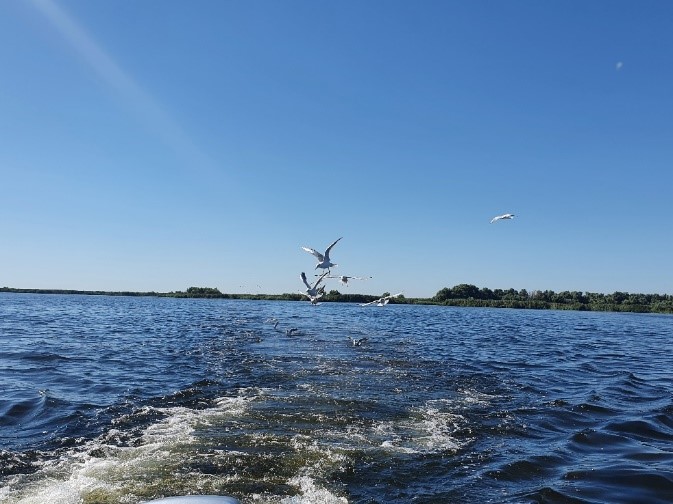
The project aims to multidisciplinary assess the quality of the natural environment in the representative areas of the Danube Delta and the Razim-Sinoie Lagoon Complex, areas that are under the impact of natural and anthropogenic factors. The objective of the project is to estimate the causes of the degradation, as well as to identify the impact on the environment and socio-economic development in the region.
The project aims to carry out research on the accumulation of biogenic methane and the methane hydrates formation from sediments in the exclusive economic area of Romania at the Black Sea, with a focus on the geo-climatic and ecological implications.
Study on the European Parliament’s INSPIRE Directive and how it can be harmonized with data from marine buoys.
The project aims to carry out multidisciplinary research on the anoxic intervals in the Carpathian-Ponto-Danubian area that are necessary to highlight the hydrocarbon potential.
The project aimed at a comprehensive investigation of the Romanian sector of the Danube in order to substantiate the specific studies in the sectors with navigation difficulties. Its main objective was to study the critical areas for navigation: delimitation, morpho-sedimentary characterization, hydrodynamic processes, water and sediment balance, modeling, turbidity.
The project aimed at mapping and assessing the state of benthic habitats, thus contributing to the development of appropriate management measures for the sustainable use of marine resources. Information on benthic habitats on the Romanian continental shelf of the Black Sea and the species inventory were updated, and an estimate of the density and biomass of benthic populations was made. Thus, the project contributed to a better understanding of the dynamics, biotic potential and productivity of each investigated habitat type. The results were included in the database for integrated environmental monitoring at national and international scale.
The project aimed at developing local action plans for geodiversity, based on the following steps: compiling a database with the geological and paleontological sites in Dobrogea and their hierarchy according to the international, national, regional or local importance; selecting the most important sites in each major geo-techtonic unit of Dobrogea territory, that will be studied in detail regarding the geodiversity values; developing local action plans on geodiversity, that will be discussed with the local action groups established during the project implementation; these groups will include representatives from the National Agency for Protected Natural Areas (ANANP), county agencies for environmental protection, county and local councils, schools, members of local communities. Dissemination, awareness and promotion activities will take place at the same time.
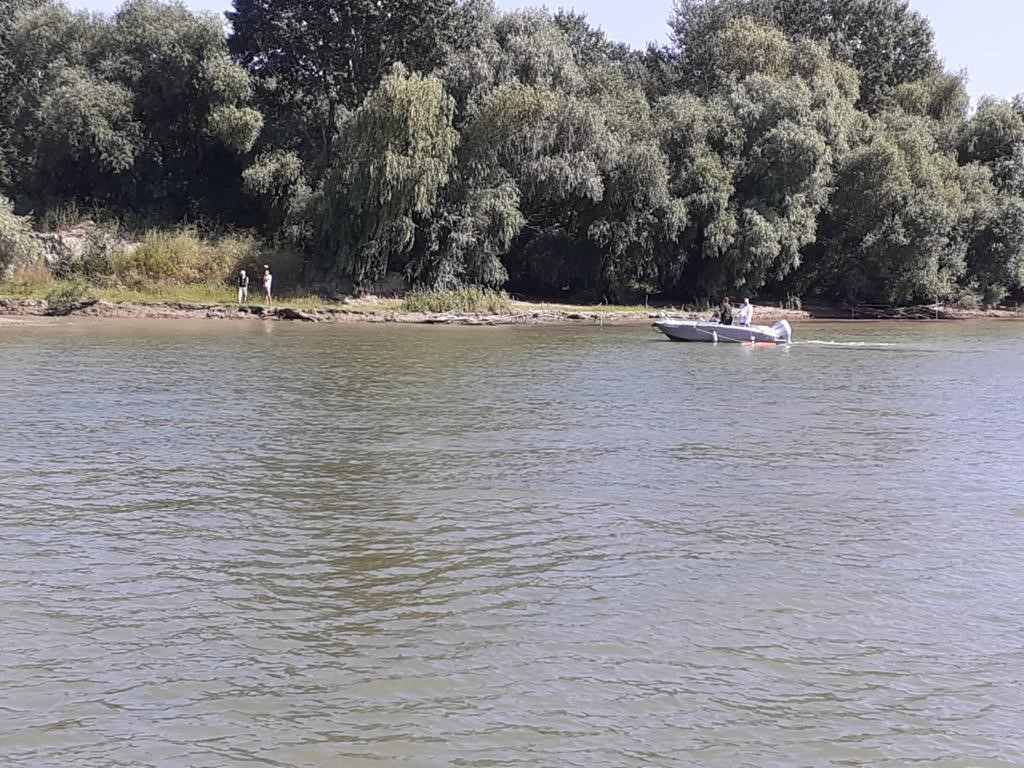
Complex, morphological, hydrological, sedimentological and ecological study of the areas affected by anthropogenic changes that have occurred in the Danube Delta, with emphasis on the rectified meanders of the Sfântu Gheorghe Branch and the lowlands nearby. The project aims at qualitative and quantitative assessment of the human activities impact on the biodiversity of the area by analyzing the biocoenosis and the quality of water and sediments, quantifying the environmental impact of anthropogenic activities caused by the meanders rectifications of the Sfântu Gheorghe Branch and building a measures plan to rehabilitate the environment that is under their influence.
The project aimed to interdisciplinary approach the study of the time interval corresponding to the Holocene, that is, of about the last 11,700 years, starting from the assumption that only by deciphering the past and studying the situation of the present is possible the prediction of future evolution. The main targets pursued within the project are: determining the current geodynamic regime of the coastal area and deltaic area, as well as the current variation of the average sea level; studying the structure and content of the Holocene sedimentary quvert, in order to highlight and decipher the paleogeographic changes produced in the recent past.
The project aimed at the very detailed geophysical investigation of the submerged areas belonging to several archaeological sites located on the Danube (Aegyssus, Capidava, Turris, Sucidava, Axiopolis, Castravita, Desa, etc.), and of one area located in the Danube Delta (Halmyris, Salsovia, Troemsis, etc.), covering practically all the epochs of the ancient period from a historical point of view. As typology and chronology, the sites included various archaeological monuments illustrating the stages of the historical and topographical evolution of the fortresses, most of them being ports on the Danube. Geophysical studies conducted in the submersed area were useful for the future archaeological excavations to be executed on land, providing a more defined picture of the continuity of ancient vestiges (walls, port structures) in submerged areas. In the case of the Danube Delta sites, but also for those located on the Danube, the geophysical works (magnetometric and electrometric) aimed to identify sources of anthropogenic pollution of the soil and the basement – contemporary structures built in the area of the sites, eventual pipelines that can cross these settlements, and last but not least, possible pollution feathers existing in the area of sites in the immediate vicinity of some industrial polluters, which could degrade the buried ancient structures. In order to eliminate as many of the anomalies generated by anthropogenic polluting factors (buried constructions of recent age, pipelines, oil polluted areas, etc.), it was necessary to carry out research with the use of GMsysv software, 3D and 2D models corresponding to the anomalies generated by the pollutants existing in the archaeological sites. The proposed methods for geophysical research in the submersed area were magnetometric, seismoacoustic (side sonar scan) and electrometric, respectively. Geophysical studies were conducted in the fluvietil area and lake adjacent to each archaeological site.The first works were topographic, with the help of which the skeleton of the field data acquisition networks was transposed into the field, with archaeologists also participating in this operation. The data acquisition works started from the topographic support network of each site, and the geophical mapping started with bathymetric measurements, followed by magnetometer measurements and ending with electrometric works. Previously, magnetic susceptibility studies were conducted on rock, brick, mortar, etc., samples necessary to calibrate the magnetometric method. Subsequent to the conduct of these studies, diving in the areas of interest were carried out to mark the in-situ, film and photograph any vestiges discovered. GeoEcoMar has diving equipment, underwater photography and filming.
The project aimed to answer several important questions related to the efficient management and adaptive management of protected areas on the Romanian coast, such as: How much do we know about the vulnerability and resilience of MPA ecosystems? What are the natural and socio-economic pressures exerted on MPAs? How do the systems evolve? What are the benefits offered by MPAs in certain sectors of the “blue economy”.
In line with the global goals agreed under the Convention on Biological Diversity, the number of marine protected areas (MPAs) is rapidly increasing, but their socio-economic benefits remain difficult to predict and are still under debate. The challenge is to demonstrate to users of the “blue economy” that MPAs are essential tools for protecting, maintaining and enhancing marine ecosystems and to assure them that marine protected areas can provide optimal and sustainable ecosystem services to society. The project proposed pro-active conservation measures necessary to achieve the “favourable conservation status” of species and habitats and the “good ecological status” of the entire marine ecosystem. Obtaining new field data, in line with EU policy principles (DCA, DCSM, etc.), contributed to the development of an assessment of ecological pressures on MPAs and to the establishment of the status of ecosystem services.
Geological interpretation of geophysical information and development of risk maps for the continental shelf of the Black Sea, emphasising on the areas with surface gas accumulation and the areas with tectonic hazard.
The project aimed to achieve an integrated management of the Danube – Danube Delta – Black Sea coastal area macro-geo-system by applying a geo-ecological monitoring program.
DELMAR project aimed to develop an interdisciplinary approach to benthic habitats on the Romanian Black Sea shelf and their evolution. The project emerged in the context of the transposition into the national legislation of the Marine Strategy Framework Directive (MSFD), which complements the provisions of the Water Framework Directive 2000/60/EC applied to coastal and transitional waters, a Directive that imposes a holistic approach to the marine environment, based on the adoption of adaptive management, which also covers the offshore area. At the time of the project, Romania had a habitat classification system derived from the implementation of the Habitats Directives 92/43/EEC and Birds Directives 79/409/EEC, through which Special Areas of Conservation were established, included in the Natura 2000 network. These are located mainly in the coastal area, while the offshore area, although characterized by the presence of biotopes representative of the bionomy of the Romanian shelf, is excluded from this classification scheme. The application of the EUNIS classification system within the specific framework of each region by Member States implies the integration of non-biological components (substrate, hydrogeological and hydrochemical conditions) and biological components (structure and condition of component communities) in the definition and delimitation of habitats in each region. These elements must, according to the DCSM, form the basis for the application of sustainable management, which capitalizes both the intrinsic value of biological diversity and the services provided by the habitat.
The project aimed to apply a complex investigation methodology to the Romanian sector of the Danube, in order to substantiate specific studies: river – tributary river and, respectively, river – sea confluences, the area with islands, the area with meanders and the area with a branched course, including rectifications, the area with arms ephemerally fed by the river, etc.;
The project aimed to outline a number of geological energy and CO2 storage solutions to stimulate the renewable energy production in Romania, coupled with the reduction of the energy exports and greenhouse gas emissions.
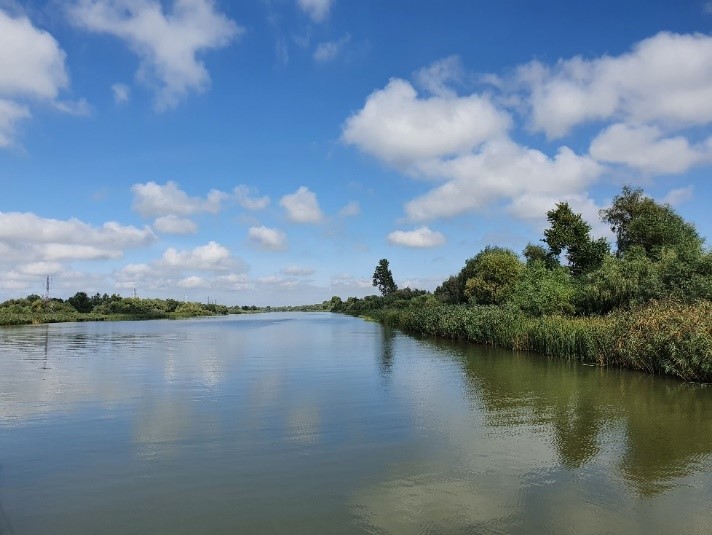
The project aimed to characterize and assess the current state of aquatic ecosystems in the Danube Delta and the Razim-Sinoie Lagoon Complex by carring out periodic monitoring and estimating the trend of evolution of the quality of the ecosystems thare are under the impact of the natural and anthropogenic factors, in order to evaluate and predict the hydro-sedimentary processes and environmental risks, especially in a more important (large economic) region.
The project aimed to carry out complex geological and geophysical investigations to highlight the reserves of mineral aggregates located on the Romanian Black Sea inner shell. These investigations were aimed at designing and implementing a technology for investigating the shelf area in order to map the accumulation of mineral aggregates and to create a map of the probable existence of the mineral aggregates accumulations on the Romanian shelf at the Black Sea.
A three-dimensional hydrodynamic model was used within the project, being implemented on the Black Sea and detailed in the coastal area of Romania. Several simulations were carried out in various meteorological and flow conditions of the Danube in order to study the influence of the external factors on the coastal currents. Also, with the help of a numerical model of the processes in the vicinity of the coast in stormy conditions, the impact of storms on some beach profiles on the Danube Delta coast was also studied.
The project aimed to carry out strategic studies of national interest, strategies and forecasts, accompanied by the drafting of specific materials (maps, profiles, columns, etc.), necessary for the sustainable development of Romania.
The project aimed to protect and capitalize on the national geological and archaeological heritage, under anthropogenic impact, by increasing knowledge, as well as proposing protective measures, promoting Earth Sciences and life, environmental education includeed. The main purpose of the project was pre-university education and geological literacy of the general public, offering also educational activities in the field of geology for students of specialized faculties. The project involved the elaboration of a structured educational program in the form of three packages: school education, internships for the students of the faculties with geological profile and ”scientific literacy” of the general public. The first phase of the project consisted in the elaboration of the program of activities for a period of two years, the realization of promotional materials, as well as the conclusion of partnership protocols with the institutions interested in the proposed activities in the project. The educational program included three projects, with several types of activities for each project, developed according to the target audience category: the project “Hour of geology” for pupils; an internship project for students; a project of popularization of geology for the general public (which included conferences for the general public, proposals of geological trips and organization of events type “School otherwise”, a “Week of geology”, “Day of open gates”, workshops for pupils and preschoolers). During the 2-3 phases of the three projects, the dissemination activities (by participating in national and international conferences and symposiums and publishing scientific papers) were also carried out. The popularization of the research results of the project included the development of an itinerant exhibition to promote the superior Cretaceous fossil fauna of the Hateg Basin (in the additional phase 4).
The project aimed to highlight the climatic and environmental changes that have occurred in the Carpathian-Pontic-Danubian area from 6 million years ago to the present time. The project aimed to respond to a series of problems related to the global warming.

